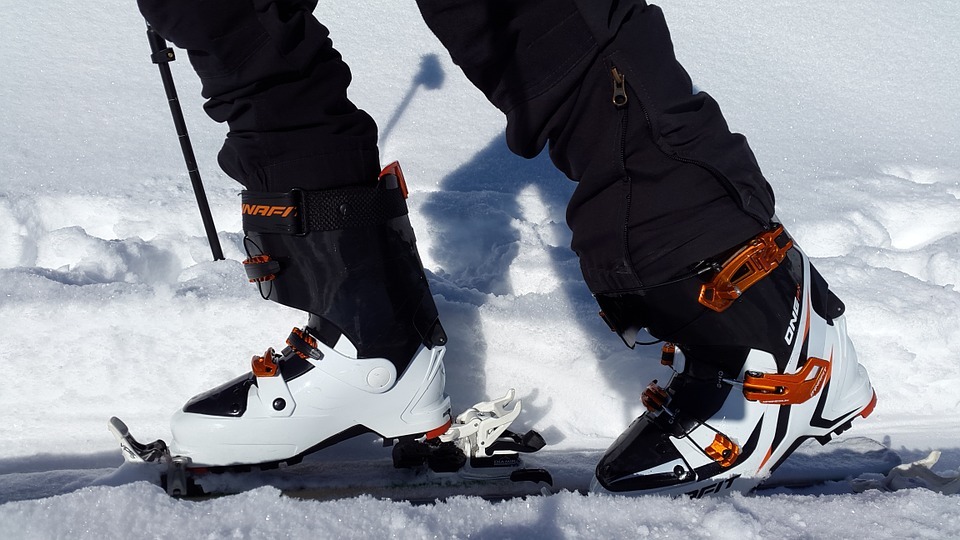Skiing is a fun activity that can give you lots of exercise and fun during the winter season. But after the fun and exciting activity, the last thing you want is a sudden foot injury that brings your mood downhill. That’s why in this article, we are to give you some foot care tips before you go skiing. So, you can avoid injuries such as frostbite, sprains, blisters, neuromas, bruises, and other foot pain while skiing.
If you enjoy skiing so much, it’s best to care for your body, especially your hands and feet, to enjoy more fun skiing trips with your family or friends.
How To Avoid Ankle Twist And Sprains
Ankle-related injuries such as sprains and twists are common among snow skiers. According to Family Foot and Ankle Clinic in Texas, ankle-related injuries had gone down in recent years because of innovative ski boots designs. However, there is still a risk of spraining or twisting your ankle. That’s why always make sure that you’re going to wear ski boots that fit you perfectly along with well-adjusted bindings to reduce ankle-related injuries.
The right fit and quality of ski footwear matter a lot. When buying ski boots, opt for high-quality even if it’s a little pricey; consider them an investment and protection for your feet.
How To Avoid Blisters
Blisters are liquid-filled bumps, and they can be painful. Blisters appear when there is repeated friction on the skin. That’s why if you don’t want to develop blisters after skiing, make sure you wear well-fitted ski boots and change your socks frequently. Also try to rub small amounts of petroleum jelly or use bandages, tapes, or moleskin on your feet before you wear your ski boots to avoid friction.
If you develop a blister even after following these steps, just remember that don’t pop it even if it hurts. If it breaks on its own, make sure you apply an antiseptic on it and cover it with a sterile bandage after. If the pain persists, seek advice from a podiatrist who can professionally drain the blister in a sterile environment.
If you have a blister, or there are parts of your hands and feet prone to blisters, you may cover them with blister pads, so it doesn’t directly touch or rub against the material of your boots.
How To Avoid Frostbites
Even if it’s not a common threat, frostbite can affect skiers and snowboarders alike. It’s an injury that happens when the skin and its underlying skin tissue become cold and start to freeze. Surprisingly, frostbite can affect hands, toes, fingers, and feet if they are not adequately covered with socks or gloves.
To avoid getting frostbite, try not to remain outdoors for an extended period of time, especially if the weather is too cold. Always remember to wear appropriate cold-weather socks, gloves, and other necessary accessories. However, make sure that your socks and ski boots are not too tight because they can limit blood circulation in the body. Also, go skiing resorts and slopes that have mountain patrol, and never go alone on an off-beaten path.
Today, there are heated gloves that you can get specifically for skiing. It has an innovative finger cap heating element that will guarantee warmth and comfort on the fingers, palm, and back of the hand for at least ten hours. What’s excellent with this heated glove is that it’s compatible for use with your phone’s screen since the material closely resembles those used in touchscreen pens.
How to Avoid Morton’s Neuroma
Morton’s Neuroma is an ailment where the tissue that surrounds the plantar nerve in the foot thickens and creates pain. Some say Morton’s Neuroma mostly happens with skiers because their feet are always squished in too tight in their ski boots. That’s why the plantar nerves are continuously pinched and become irritated over time. That’s why to avoid developing Morton’s Neuroma, always remember to wear boots that perfectly fit your feet.
If you already have Morton’s Neuroma, make sure that you visit your podiatrist. Early diagnosis can help slow down the development of Morton’s Neuroma and lessen the need for surgical treatment. Physical therapy exercises and custom orthotics can also help strengthen your foot muscle and alleviate the pain.
Once you have Morton’s neuroma, it might not be easy for you to ski because the sharp, burning pain will be intolerable and you might even get injured once you feel it sting while you’re skiing down some slope.
Top Tips To Help Prevent Foot Problems When Skiing
- Choose The Right Pair Of Boots – Your ski boots must be firm enough to help your feet and ankles stay in place, but they also should allow your ankle to flex. Your ski boots should be snug but not too tight. Always check the fit by kicking your heel and toe against the ground while wearing your shoes. If you’re foot slides forwards and backward, then the boots are probably too loose. Always remember that you will be wearing ski boots for a long time when you’re skiing, that’s why they must be comfortable.
- Always Wear One Pair Of Thin Socks – Opt for thin socks that are specially designed for skiing. Remember not to layer or put on cotton socks because they can be very absorbent.
- Bring A First Aid Kit – Always have a first aid kit handy that contains Vaseline, blister plasters, and antiseptic. It’s better to be safe than sorry.
- Don’t Tuck Your Trousers In Your Boot – Tucking your pants in your boot may cause some uncomfortable situations on your feet. Remember that you should keep your feet snug, but you don’t want them to be too tight.

